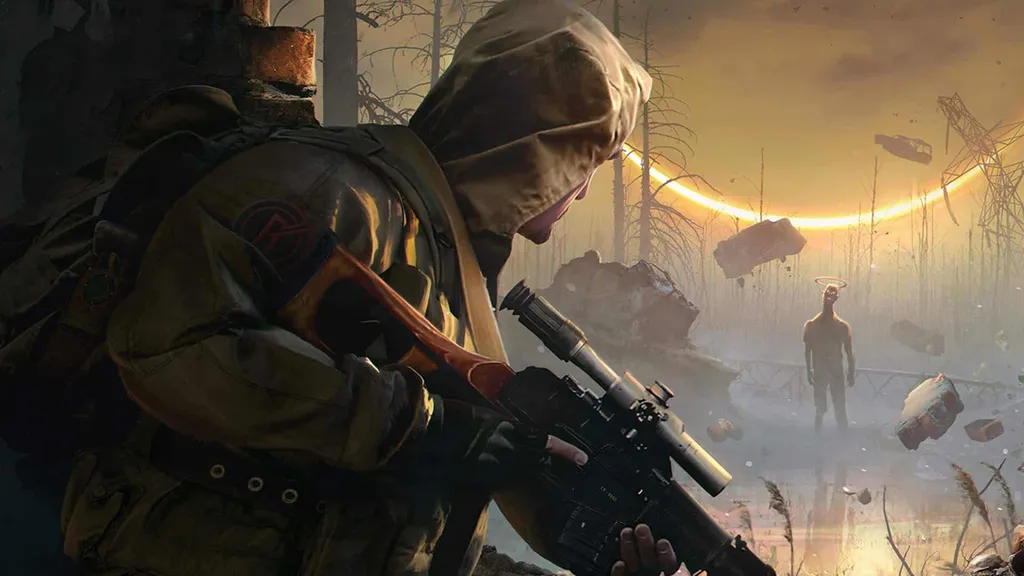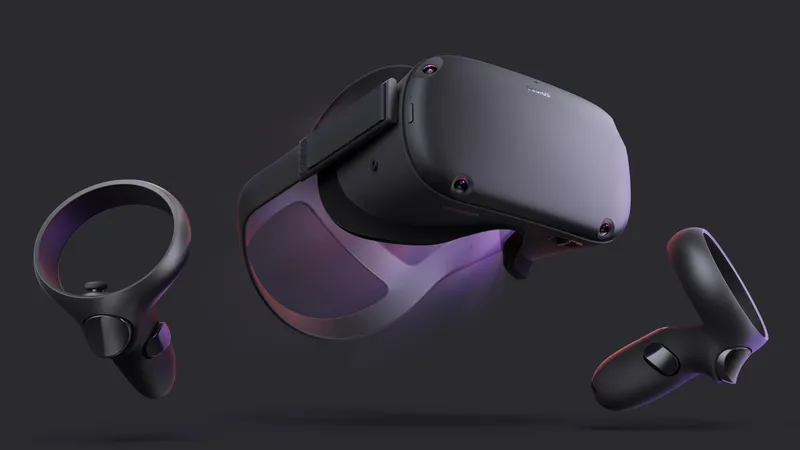In spring 2021, our VR team in CM Games decided to port the PC version of Into the Radius VR to the Meta Quest Store. We released it in September 2022 and had it paid off in a week. Now it’s time to share the details.
This article will be helpful for game developers who are considering porting their games or publishing on Meta Quest Store. We will explain how we came to Meta Quest 2, what issues we encountered when porting the PC version and how we solved them.
The following piece is a guest post sent to UploadVR by CM Games, written by Into the Radius producer Aleksei Shulga.
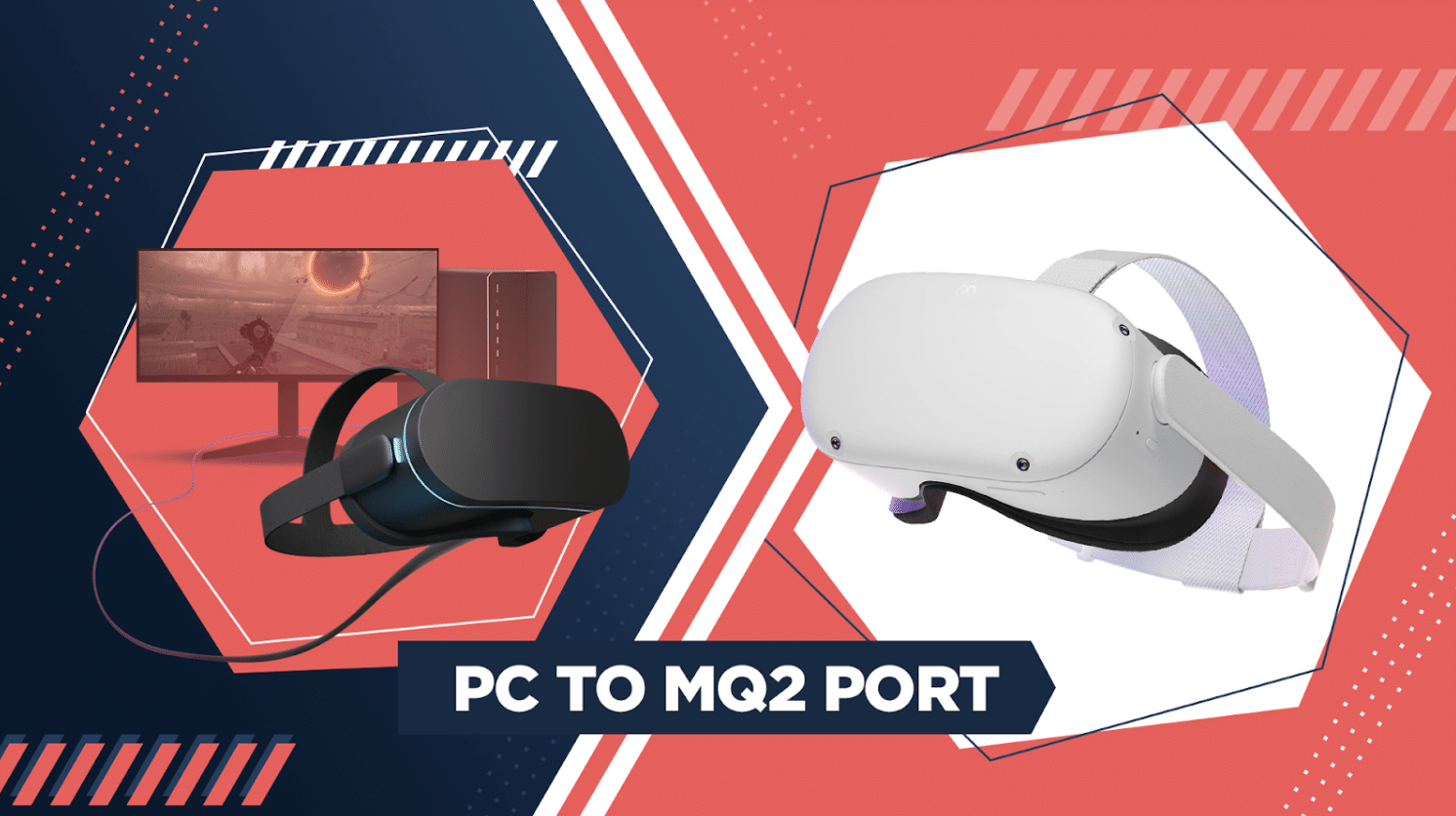
Choose The Best Porting Studio
Let’s discuss how you can arrange porting in general.
- Co-development. A partner integrated into your work process with your internal team being heavily involved in the production process and calling the shots while the partner studio provides the missing expertise and human resources.
- Outsource model. You entrust the game to a partner to take care of it from the beginning to the platform certification with some supervision and guidance from your side. Sometimes the revshare model is used.
For Into the Radius, we opted for a co-dev model from the get-go for the following reasons:
- Accelerated work pace. The game was constantly updated as part of our premium live game business model. While we negotiated the porting, the game was already in production, and a major update was planned. If we wanted to use the outsourcing model, we would have had to wait until the game was more or less finished to outsource it; otherwise, no one would want to estimate the final cost with an ever-changing work scope.
- Preserving gameplay. There is a vast difference in specs between the PC and Standalone VR, and our design team had to make sure that if they had to make concessions, it wouldn’t ruin the experience.
- Future updates. We wanted to keep updating the game, so we either had to depend on a partner to continue to do it or be able to do it ourselves.
To sum up, we didn’t have much choice regarding the model. Your experience may differ, but it’s critical to think through your product plans for a few years after porting.
That’s why we chose to collaborate with a potential porting partner. We also encourage you to pay attention to the following points in your selection process:
- Know the team. During the search process, you should interview the potential partners’ team members to ensure they are competent and communicate effectively. Remember that companies always put their best foot forward and present the best employees to the client. But there is no guarantee that these particular people will be working on your project or doing so for an extended period. It can be helpful to specify that you want to meet the team working directly on the project before you sign the contract or even put these employees’ names on it, providing for the possibility of replacing them for various reasons.
- Partner portfolio matters. A good portfolio is not only the guarantee that you can port the game to another platform but also that the porting will be high quality. Meta Quest Store is still a closed platform, therefore, a partner portfolio will help to proceed with pitching.
In our case, we partnered with Snowed In Studios. They are part of Keywords Studios, which is well-known to Meta and a respected service provider globally.
- Price. When you first contact a studio try and get a very rough ballpark estimate for the cost of the work involved, we found out that the estimates can vary more than thirty times between studios. Save time on the negotiations with the ones that are clearly out of reach or inadequately low. If you are working on a co-development model, you will likely be doing time and materials agreement since you will change the game as you port it and make monthly payments for the work approved by your side.
- Ability to port. Into the Radius is a challenging game to port to mobile devices — large open spaces where players can roam freely, manual control of items with each item meticulously detailed rather than represented as an icon in an inventory slot. So to make sure it can be done with an acceptable level of gameplay compromise, it’s essential to manage risks. The earlier you can do this, the less money you will spend on a potentially failing project.
Make all the cuts to reach the target frame rate and see how bad it looks, what the most challenging areas are, and try to figure out if and how you can handle it, at least theoretically.
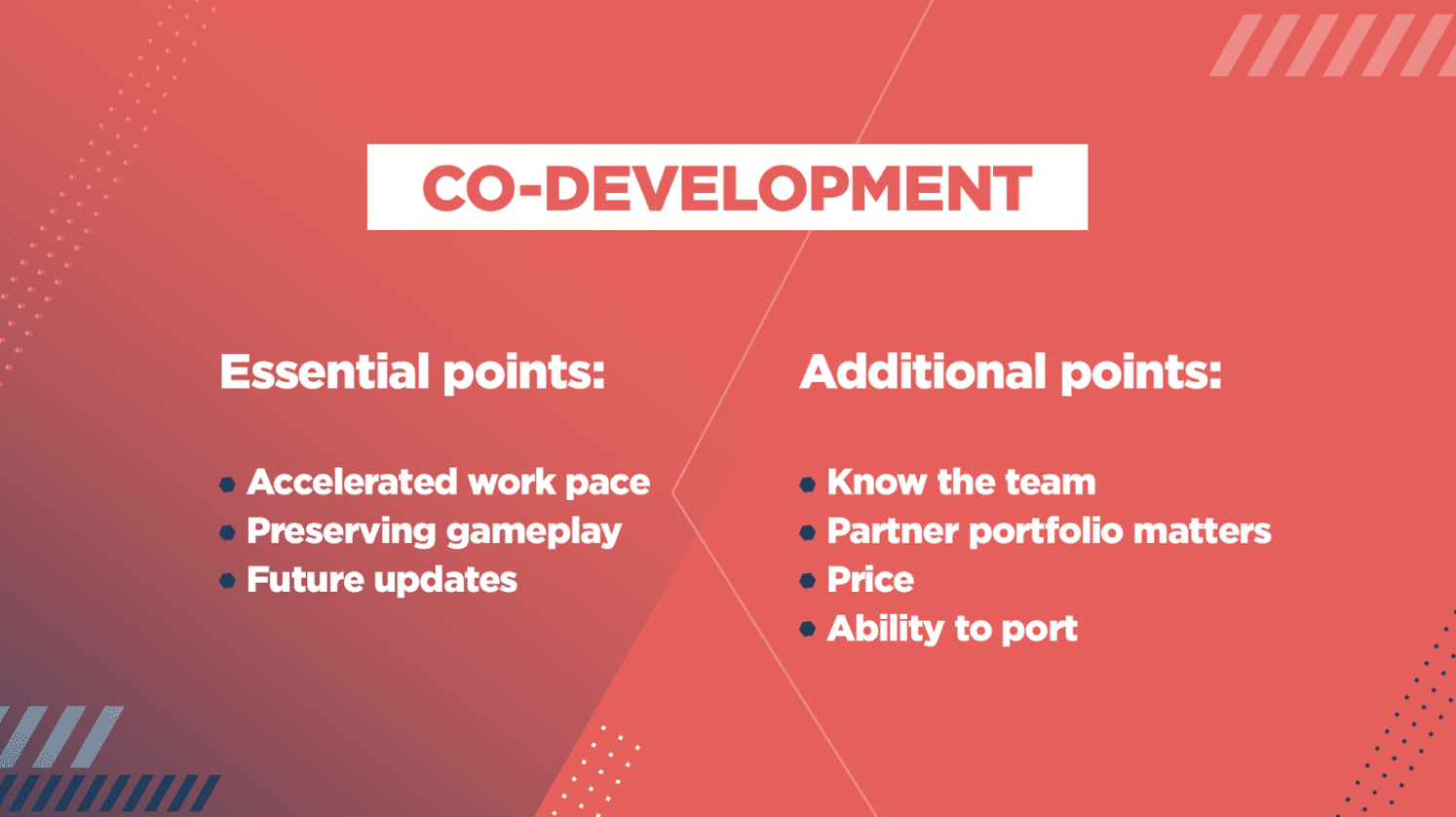
Quest Store Pitch
The Meta Quest Store is a closed and carefully curated platform with high standards for the technical quality of the games released there. The platform determines whether you can release a game in the main store or have to choose others, such as App Lab and Side Quest.
Chances are, if this is your studio’s first VR game, and you don’t have other platforms where your game already runs great, it’s easier to release it to the App Lab first, collect data, iterate the product, and then pitch it to the main store.
The game was doing well on Steam and it helped us in making contact with Meta. We got contacts, met the people in charge, and prepared a pitch deck with all the data and plans we already had. And we held several face-to-face meetings.
We chose this option because we’ve already had success on Steam, selling over 100,000 copies and getting highly positive feedback. We outlined our goals in the pitch deck, after which Meta representatives expressed doubts about the possibility of 1-to-1 porting. But we were able to convince them, thanks partly to thorough communication and the choice of a porting partner.
In September 2022, Meta Platforms released about 5-10 games monthly to give each product its time in the limelight. That’s why platform representatives want to ensure you deliver on time and with high quality.
Porting Stage
Porting a live game is more complicated than a finished one. You need to prepare the original version, merge the original and the ported versions, then control both streams. For a better workflow, communication is key.
- Refactoring the original version. When the porting team started their work, the ITR team was already busy with the 2.0 update, reworking the graphics, game maps, and even the gameplay loop. So we decided to do separate branches before the release of the 2.0 version, with the porting team focusing on optimizing the Unreal Engine and overall game systems, and the content optimization was to happen after the merge.
- Monthly planning. The porting studio acts as a contracted group of employees who port the game in stages. Thus, we can easily calculate the budget for a given period. We encourage you to discuss the priorities of each stage, leverage your partner’s experience, and give feedback on the plans and results obtained. Things change, and if both your teams are on the same page about where you’re going now, you can solve problems more effectively.
- Regular check-ups. Our senior team members joined the daily porting team meetings twice a week. It helped to strengthen ties between the teams and better align developer efforts. The porting team was integrated into our Slack and Jira, and we tried to eliminate as many communication barriers as possible. We also had weekly meetings with management to assess progress, team composition, and goals for the next sprint.
- Different time zones. We had an 8-hour time difference between studios. It turned out not to be as detrimental as we thought at first. As long as you have a couple of hours of reasonable work day time overlap, it’s ok from our experience. With some workflow modification, it also ensures uninterrupted work on the binary files, because when one team has finished its workday, the other has just started.
- Communication with Meta. You should also keep your Meta curator informed about the status of the version. Set deadlines for milestones, report them, and meet them. If you fall behind on your deadlines, notify them in advance. The more professional and committed you are, the more credibility you will have.
Public Announcement
After six months of porting, we were allowed to announce that we were preparing a Quest 2 version of the game with a teaser. The release window was still considered September, but in most cases, we are not allowed to announce any dates until certification is complete. The public announcement also included information that there would be a closed Beta.
Beta
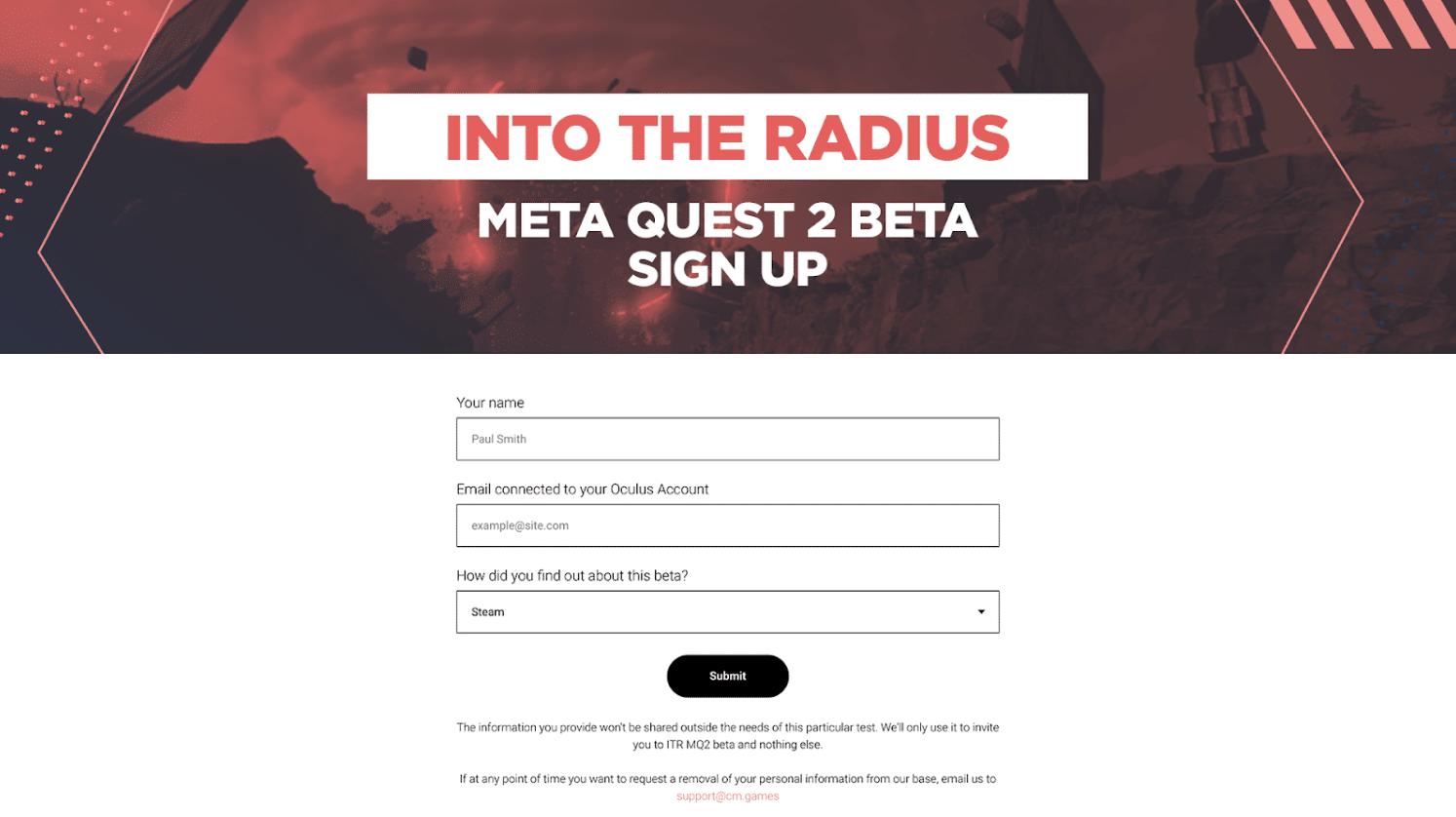
We announced the beta at the end of the teaser. Players had to open a landing page and leave an email to sign up for testing to participate.
It was a fully functional version of the game with all the necessary content, with most of the team’s efforts focused on performance improvements and bug fixes. We decided to divide the beta access into several waves with an increasing number of participants in each wave, starting with 20 select users from the core community and ending with 2,000 in the next waves.
The beta was also critical for us to answer questions from the community and potential buyers. For example, does the trailer reflect the actual gameplay? Is the game truly a fully-featured Into The Radius? The beta release gave users enough information to alleviate any concerns.
Certification
Before your game can be released to the store, it must pass the official certification process. By the start of the process, you supply a complete build, and the designated quality assurance vendor tests it for compliance with the Virtual Reality Checks (VRCs). All bugs are logged and must be addressed in a timely manner or requested to be waived by your project’s curator.
Two VRC points usually cause the most problems. First, it’s performance — there should not be long FPS drops during the game. And second, the progress of the game should not be blocked in any way.
Also, remember that all marketing assets and the store page must be approved and ready several weeks before the release. The earlier you have everything ready, the more leverage you have to publish the page if the certification goes perfectly. The earlier you publish the page, the more time you will have to affect traffic using marketing tools.
Summary
Porting Into the Radius to Meta Quest 2 was a challenge because of our business model of free updates, the game’s scale, and complexity. But it turned out to be justified financially, and in terms of audience response. It can be a much easier process for simpler games or games with a different structure, requiring much less investment.
In any case, if you are considering porting your game to Meta Quest 2, ask yourselves these questions:
- How complex / hardware-demanding is your game?
- Do you have the budget or available investment to do it?
- Do you have good metrics to show from other platforms?
Then choose a porting approach and present everything to Meta. If they are interested, decide whether you will do it yourself, find a partner, or use a mixed scheme as we did.
Once again, communication is key to the success of multi-stakeholder projects. Not only do you need to make a great product, but you need to do it on time and with well-delivered communication.
Aleksei Shulga, the director and producer of Into The Radius VR, went from a 3D artist to developer to producer during his 15+ year long career path in the industry.

